The constellation Monoceros is a beautiful pattern of stars visible in the northern hemisphere during winter, when skies are dark and evenings long.
This makes it a great constellation to observe in the night sky with the naked eye.
You can find Monoceros, the Unicorn, by looking to the left of the constellation Orion and just above Sirius, the brightest star in the night sky.
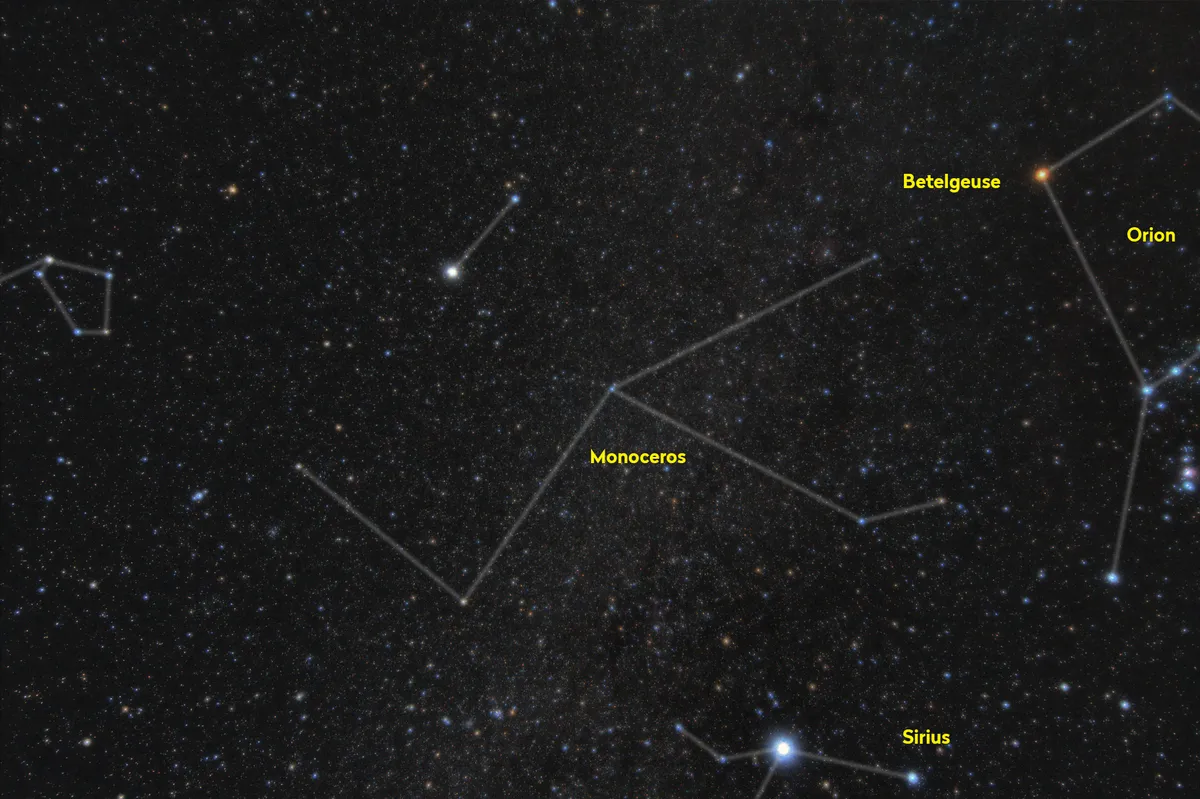
Above Monoceros lies Gemini, which is distinguishable by the two bright stars Castor and Pollux, easily found by tracing a line from Orion's Belt through bright star Betelgeuse.
Once you've found Monoceros, it's worth getting our your telescope and observing some of the beautiful deep-sky objects that can be found within the constellation.
Take our deep-sky tour of the unicorn below and discover more about what this winter constellation has in store.
Each of our targets is best seen with a medium or large telescope.
For help locating each target, download our Monoceros deep sky tour guide (PDF)
6 deep-sky objects in Monoceros
1
NGC 2232
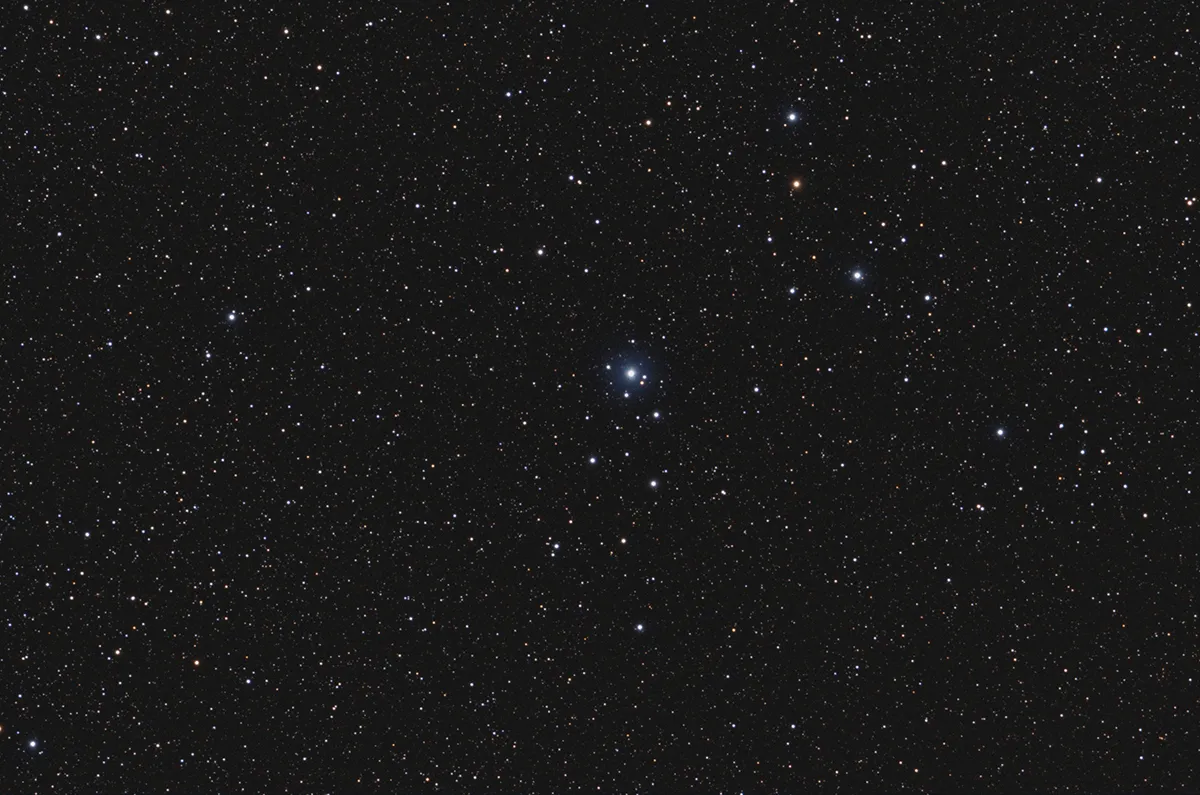
Our first stop is open star cluster NGC 2232, which is located 2.4˚ to the north and a bit west of the telescopic triple star Beta (β) Monocerotis. It’s a large cluster with an overall diameter of 36 arcminutes, its core region appearing 7 arcminutes across.
NGC 2232 is centred on the mag. 5.0 star 10 Monocerotis, which tends to dominate the proceedings. Two spindly ‘legs’ of stars appear to hang south from 10 Monocerotis, extending for 0.4˚. To the north lies a gap, before a small grouping of sixth magnitude stars is seen. The group is attractive at low powers.
2
M50
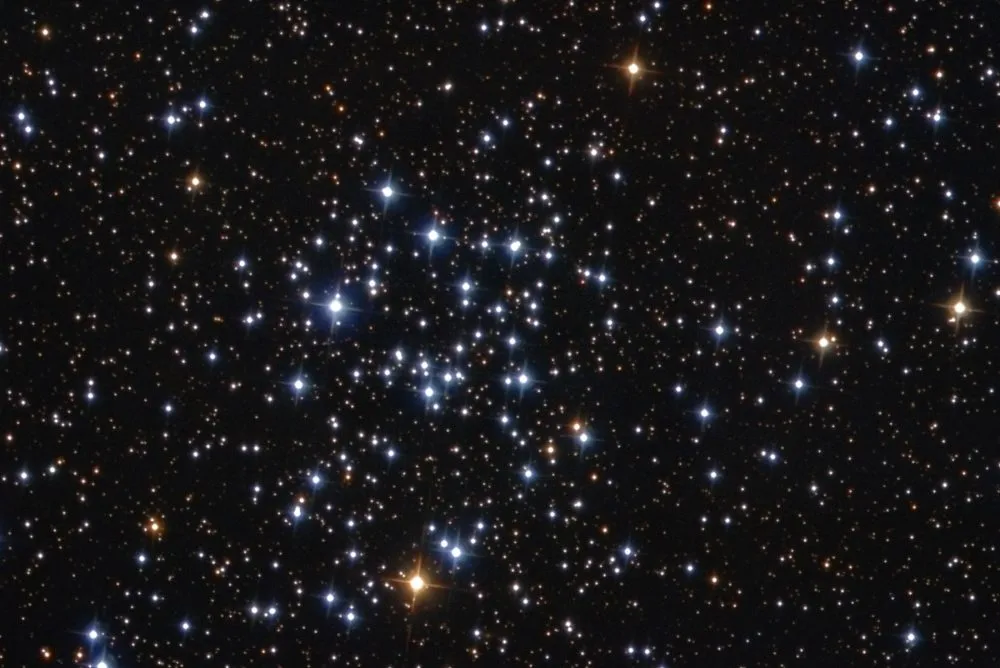
M50 lies nearly 10˚ east-southeast of NGC 2232, or 4.2˚ northeast of mag. 4.1 Theta (θ) Canis Majoris, the star marking the tip of the Great Dog’s nose. It’s a bright, compact cluster that's well resolved at 100x power using a 150mm instrument, the view through the eyepiece revealing 70-plus of the cluster’s 600 or so members.
Visually, the resolved stars in the cluster give it a non-round shape; it is also known as the Heart-Shaped Cluster. A 250mm scope shows a rich cluster containing 150 stars in an area 25 arcminutes across. Many of its stars appear blue-white in colour.
3
NGC 2335
NGC 2335 is a mag. 7.2 open cluster located 1.9˚ south-southeast of M50. It’s also the gateway to the Seagull Nebula, IC 2177 (this tour’s next object). The cluster sits north of the middle of a right-angled triangle formed from mag. 7.0 HIP 34357, mag. 8.1 TYC 5385-1690-1 and mag. 7.9 TYC 5385-0206-1.
Many open clusters have some defining pattern or shape and NGC 2335 is no different, containing four stars between mag. 9.5 and 11.2 that form a diamond or rhombus pattern in its core. A 250mm scope reveals about 25 stars in the cluster, all contained in an area 10 arcminutes across. Upping the aperture to 300mm increases the count to 40 stars.
4
IC 2177
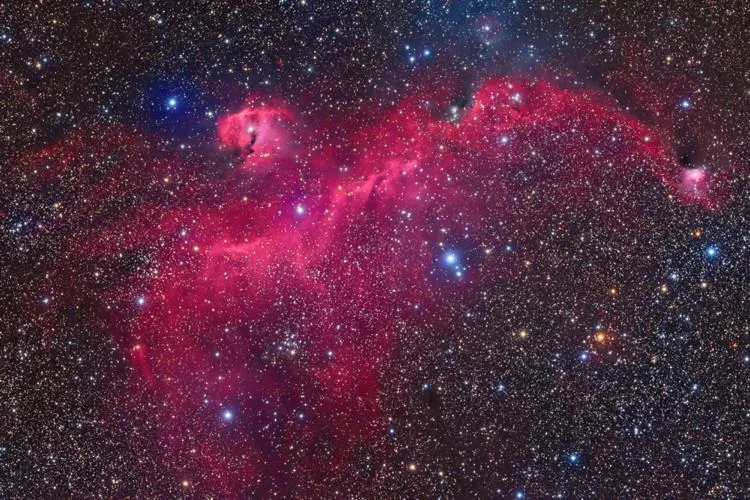
Our next target is large and faint. The Seagull Nebula, IC 2177, is an emission nebula with a low surface brightness due to it covering an area 120 x 40 arcminutes. It is possible to see sections of the nebula using smaller instruments, but you’ll need a low power and a dark sky. A narrowband nebula filter can work wonders here.
The northern ‘wing tip’ is marked by NGC 2335, with the mag. 6.7 cluster NGC 2343, 0.7˚ further to the south-southeast. The main band of nebulosity drops south from NGC 2335, curving to the west. Variable star V750 Monocerotis (mag. 7.0 to 8.4), 0.7˚ southwest of NGC 2335 appears surrounded by a haze (Gum 1).
5
NGC 2353
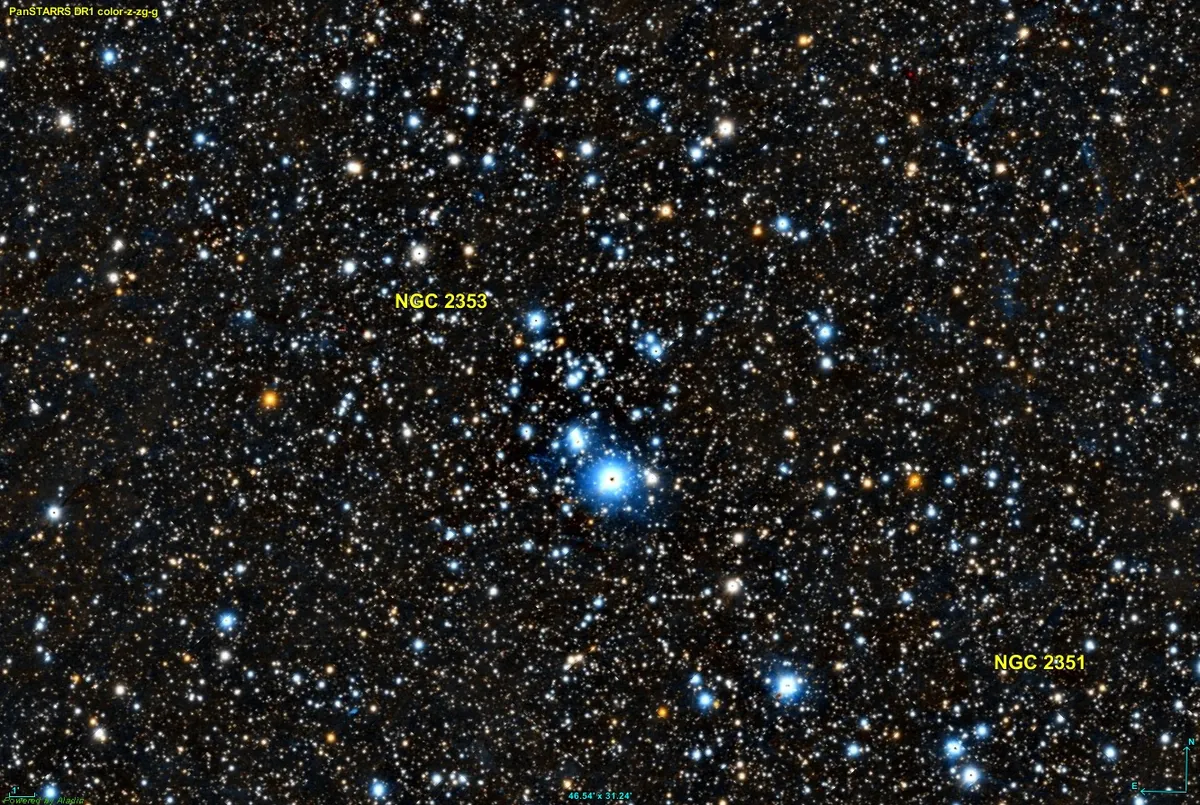
NGC 2353 is an open cluster located a bit south and 2˚ east of NGC 2335. It’s dominated by mag. 6.0 HIP 34999, located south of the cluster’s centre. It is not part of the cluster, its association being nothing more than line-of-sight. The cluster’s core is compact and surrounded by three stars, of magnitudes 8.8, 9.2 and 9.8, arranged in an equilateral triangle.
A 250mm instrument reveals 30-plus stars scattered across an area 10 arcminutes across. One of the problems viewing NGC 2353 is the richness of the background Milky Way; it’s an object easily lost against the star field it’s in. A large aperture will reveal a multitude of stars, shining between mag. 9.0 and 11, in a 20-arcminute region.
6
NGC 2359
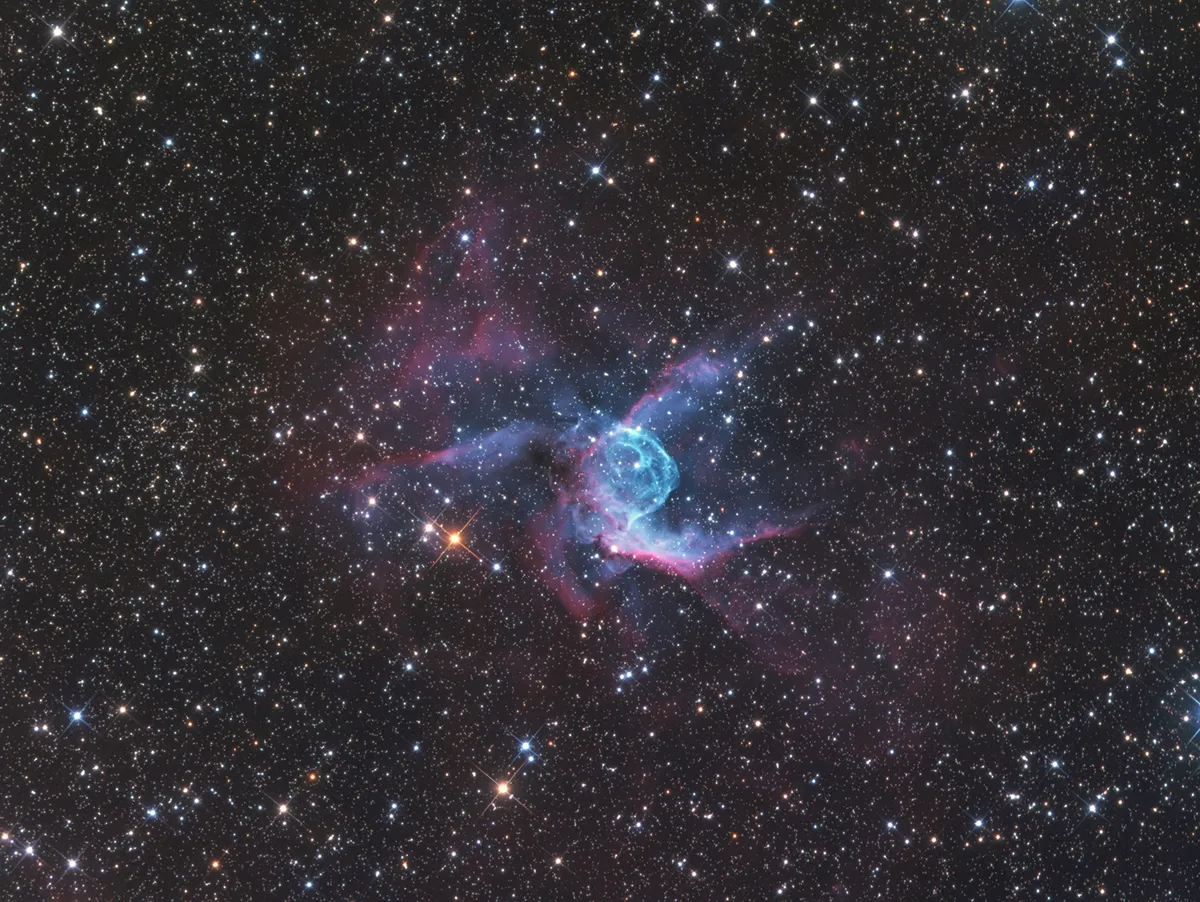
The last target requires us to slip across the border into Canis Major. NGC 2359 - also known as the Thor's Helmet Nebula - is located 3˚ south and 0.7˚ east of NGC 2353. A small scope will reveal a rectangular patch of nebulosity, about 4 x 1 arcminutes in size, and the appearance is assisted by the use of an OIII (oxygen) or UHC (ultra high contrast) filter.
With increased aperture more nebulosity appears, a faint circular feature appearing to the north of the brighter rectangle. The circular feature is a bubble formed by the stellar wind from mag. +11.5 HIP 35378 at its centre.
This guide originally appeared in the January 2022 issue of BBC Sky at Night Magazine.

